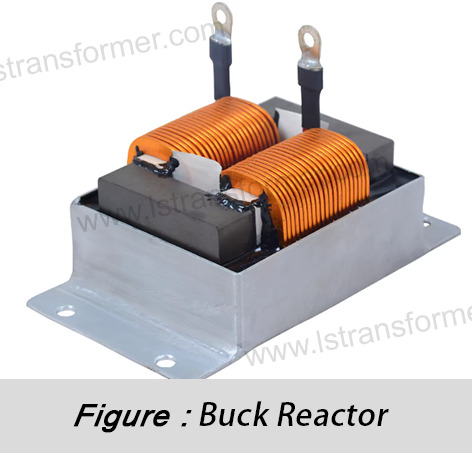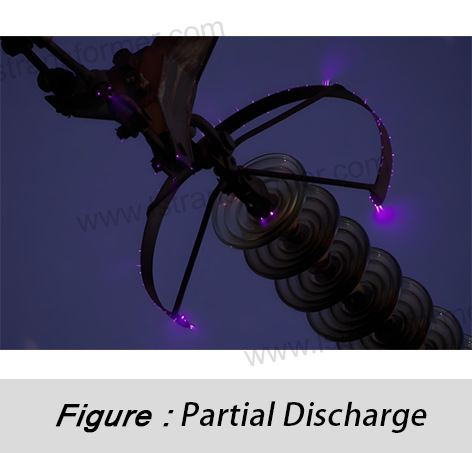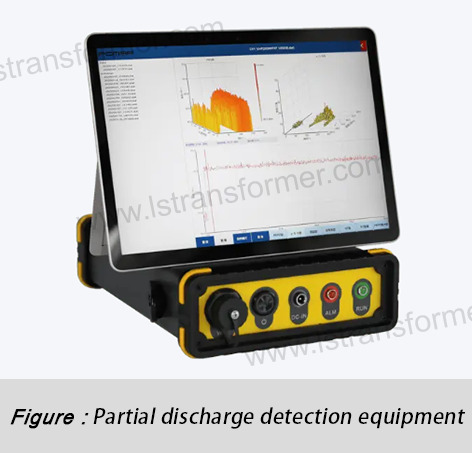Comparison of the Four Core Partial Discharge Detection Technologies: In-Depth Analysis of Principles, Advantages, and Applications
Comparison of the Four Core Partial Discharge Detection Technologies: In-Depth Analysis of Principles, Advantages, and Applications
In the field of safety maintenance for high-voltage electrical equipment, Partial Discharge Detection (PD Detection) plays a critical role as an early warning system. As global power grids demand higher reliability for key assets such as transformers and reactors, mastering accurate and efficient PD detection technologies has become an industry consensus. This guide provides a detailed analysis of the four mainstream international detection methods: the Pulse Current Method (IEC 60270 Standard), Ultrasonic Method (Acoustic Emission), Ultra-High Frequency (UHF) Method, and Transient Earth Voltage (TEV) Method, helping you develop a scientific equipment health management strategy.
Content
1. Pulse Current Method (IEC 60270 Standard Method) – The Gold Standard for Reference
●Core Principle: Electromagnetic Induction for Quantitative Capture
The Pulse Current Method adheres to the IEC 60270 international standard and is the benchmark for PD quantification. This method detects transient current pulses caused by partial discharges by connecting a precision detection impedance (Zm) in series with the equipment’s grounding wire or coupling capacitor (Ck). When a discharge occurs within the insulation, rapid charge migration generates a sudden current change (di/dt).●According to Faraday’s Law of Electromagnetic Induction:
V(t) = M × di/dt
Here, V(t) is the transient voltage across the detection impedance, and M is the mutual inductance coefficient of the measurement circuit.
Using a high-speed acquisition system to record the V(t) waveform, the Apparent Charge (Q) can be precisely calculated:
Q = ∫i(t)dt ≈ (1/R) × ∫V(t)dt
where R is the resistive component of the detection impedance
In-Depth Analysis of Advantages and Limitations
Aspect | Description | Case Study |
Advantages | ▪ Only method that directly measures apparent charge (in pC) ▪ Complies with IEC 60270 standard ▪ Lab precision up to 0.1pC | Siemens factory detected 3pC floating discharge in a 400kV transformer during factory testing, preventing field failure. |
Limitations | ▪ Susceptible to electromagnetic interference (especially <1MHz) ▪ Requires disconnecting grounding for sensor installation ▪ Cannot locate PD sources | A substation recorded 200% inflated readings due to inverter interference, requiring a 300kHz bandpass filter for correction. |
Applications | ▪ Factory acceptance tests (IEC 60076) ▪ Lab calibration ▪ Offline diagnostics | Brazil’s Itaipu Dam uses this method annually to calibrate online monitoring systems, maintaining ±5% error margins. |
2. Ultrasonic Method (Acoustic Emission) – The Mechanical Wave Localization Expert
●Core Principle: Tracking Acoustic Wave Propagation Paths
Partial discharges generate micro-explosions, producing mechanical vibrations (20kHz-300kHz). Piezoelectric sensors placed on the equipment surface capture these signals. The system uses Time of Flight Difference (TOFD) for 3D localization:
∆t = (d1 - d2)/v
Here, v is the wave speed in the medium (~1400m/s in oil, ~2400m/s in epoxy)
∆t is the arrival time difference between sensors.
In-Depth Analysis of Advantages and Limitations
Aspect | Description | Engineering Solutions |
Advantages | ▪ Spatial accuracy ±10cm ▪ Detects mechanical defects (e.g., loosening, deformation) ▪ Strong EMI resistance | BC Hydro (Canada) located loose bolts inside a transformer, preventing winding deformation. |
Limitations | ▪ High attenuation in oil (2dB/m at 150kHz) ▪ No discharge quantification ▪ Requires couplant | Tokyo Electric Power developed multi-layer sensor arrays, improving deep-discharge detection by 40%. |
Applications | ▪ PD source localization in transformers/reactors ▪ GIS mechanical fault diagnosis ▪ Bushing defect detection | A Chinese UHV substation found displacement in a converter transformer’s grading ring, with only 8cm error. |
3. Ultra-High Frequency (UHF) Method – The Electromagnetic Wave "X-ray"
●Core Principle: Capturing GHz-Band Electromagnetic Pulses
PD generates steep current pulses (rise time <1ns), emitting 300MHz-3GHz electromagnetic waves. Built-in UHF sensors (e.g., Archimedean spiral antennas) inside equipment (e.g., transformer tanks, GIS chambers) detect these signals.
In-Depth Analysis of Advantages and Limitations
Aspect | Description | Field Data |
Advantages | ▪ 20-40dB higher SNR ▪ Identifies discharge types via PRPD patterns ▪ Ideal for online monitoring | UK National Grid measured 35dB SNR with UHF vs. 12dB for Pulse Current Method in 400kV GIS. |
Limitations | ▪ 4dB/m attenuation at 3GHz in oil ▪ Requires pre-installed sensors ▪ Needs on-site calibration | Saudi Arabia’s Neom project cut installation time to 15 minutes/unit with valve-mounted UHF probes. |
Applications | ▪ GIS online PD monitoring ▪ Transformer-embedded systems ▪ Cable termination inspection | France’s RTE achieved <0.5% false alarms over 5 years with 345kV transformer UHF systems. |
4. Transient Earth Voltage (TEV) Method – The Rapid External Diagnostic Solution
●Core Principle: Electromagnetic Coupling at Metal Interfaces
PD near grounded shields induces nanosecond transient voltages on metal surfaces. Capacitive probes detect these Transient Earth Voltages (typically <1V):
V_tev = k × (dQ/dt) × Z_c
Here, k is the coupling coefficient
Z_c is the surface wave impedance (80-150Ω).
In-Depth Analysis of Advantages and Limitations
Aspect | Description | Case Study |
Advantages | ▪ Fast (>10 points/minute) ▪ No power outage needed ▪ 70% lower cost than other methods | Dubai Airport screened 128 switchgear panels in 2 hours, finding 3 faults. |
Limitations | ▪ Surface-only (3dB/cm attenuation) ▪ No discharge quantification ▪ Humidity-sensitive | Singapore developed humidity-compensation algorithms, cutting false alarms from 25% to 8%. |
Applications | ▪ Switchgear rapid inspection ▪ Transformer tank assessment ▪ Distribution room checks | Australian mines slashed maintenance costs by 52% using TEV for 400 devices. |
Technology Decision Matrix: Key Factors for Application Matching
Evaluation Criteria | Pulse Current | Ultrasonic | UHF | TEV |
Quantification | ★★★★★ | ★★☆ | ★★★☆ | ★★☆ |
Localization | N/A | ★★★★★ | ★★★★☆ | ★★☆ |
Noise Immunity | ★★☆ | ★★★☆ | ★★★★★ | ★★★☆ |
Installation Ease | Requires circuit access | Needs surface mounting | Built-in probes | Surface contact |
Best For | Offline tests | Oil-immersed equipment | GIS/Transformers | Switchgear |
In Summary
Global best practices (e.g., CIGRE WG D1.37) show that single-method solutions struggle with complex scenarios. Leading systems now adopt multi-modal data fusion:
Pulse Current + UHF:Combines quantification and noise immunity (e.g., ABB Guardus).
Ultrasonic + TEV:Enables fast switchgear PD localization (e.g., Omron PD-TEV).
AI-Driven Diagnostics:Uses IEEE Std C57.104 and machine learning (e.g., PSO-SVM models).
PG&E (USA) reported that UHF-ultrasonic fusion extended transformer fault warnings by 37 days and cut costs by 52%.
With IEC 62478 (UHF) standardization and AI advancements in PD pattern recognition, the field is evolving toward higher precision and smarter diagnostics. Follow updates from IEEE Dielectrics and Electrical Insulation Society for cutting-edge trends.
Global grid stability begins with precise detection of microscopic discharges. When these four technologies form a diagnostic network, every captured pulse and analyzed sound wave rewrites the future of electrical reliability—leaving no room for unexpected failures.
Contact Us
LuShan, est.1975, is a Chinese professional manufacturer specializing in power transformers and reactors for50+ years. Leading products are single-phase transformer, three-phase isolation transformers,electrical transformer,distribution transformer, step down and step up transformer, low voltage transformer, high voltage transformer, control transformer, toroidal transformer, R-core transformer;DC inductors, AC reactors, filtering reactor, line and load reactor, chokes, filtering reactor, and intermediate,high-frequency products.
Our power transformers and reactors are widely used in 10 application areas: rapid transit, construction machinery, renewable energy, intelligent manufacturing, medical equipment, coal mine explosion prevention , excitation system, vacuum sintering(furnace), central air conditioning.
Know more about power transformer and reactor :www.lstransformer.com.
If you would like to obtain customized solutions for transformers or reactors, please contact us.
WhatsApp:+86 17267488565
Email:marketing@hnlsdz.com

 EN
EN
 FR
FR DE
DE ES
ES



